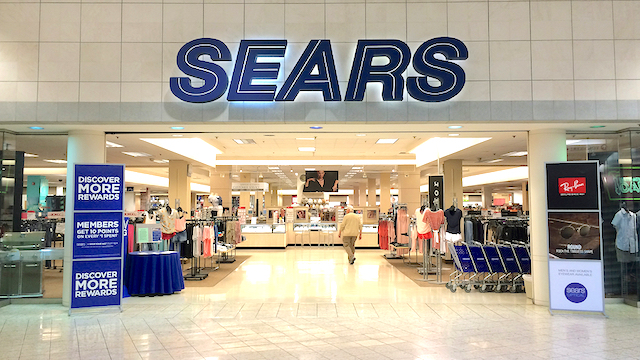In the movie Titanic there is a line where, realising chaos is about to ensue, one character helpfully notes “it’s starting to fall apart; we don’t have much time”.
Such a sentiment could well be applied to Sears. The analogy with Titanic is also apt; not least because while Sears was once a titan of US retail, it now looks set to sink.
I do not make these claims lightly, but only on the back of the evidence available. Here are those facts…
First, the top line has been in decline for as long as anyone can remember. Comparable sales have been on the slide for just over 11 years. This quarter shows no sign of even the mildest of improvements: on the contrary, the trends have worsened with the weakest comparable performance so far this year. Total revenues, which dipped by almost 14 pder cent, come off the back of a 20 per cent decline in the prior year and a 13 per cent decline in the year before that. Over an 11-year period Sears’ sales have more than halved, dropping by almost $6.5 billion in dollar terms.
Second, contrary to the statement that Sears puts out every quarter – namely that it is committed to restoring the group to profitability – there is no evidence to suggest this is happening. While we agree that, in the light of changing shopping habits, it was right to downsize and reconfigure the business this should have resulted in a more streamlined and profitable entity. However, the opposite is true: the losses at Sears are widening. This quarter it made a net loss of $748 million; in the same period last year it chalked up a loss of $454 million. Even at operating level the group is deeply in the red with a $624 loss this quarter and an eye-watering $1.3 billion loss in the year to date.
Third, in order to fund these losses Sears is monetising its assets – in other words it is selling off chunks of the business to fund day-to-day operations. Stores and real estate have been disposed of, and now it is starting to sell some of its brand assets. The problem with this approach is that the funds raised are not being used to develop or grow the firm, they are being used to prop up an ailing and failed business. As the once largest retailer in the US, Sears admittedly has a very large cushion of assets to fall back on. However, each sale further weakens the balance sheet and leaves Sears much more at risk of becoming insolvent. Indeed, by our estimation the company’s tangible net worth is now negative to the tune of several billion.
Fourth, if the company had a forward strategy to turn the business around then there may be some hope of a revival. However, this is severely lacking. Initiatives like the partnership with Citi to develop a Shop Your Way credit card and allowing riders on Uber to earn Shop Your Way points are all well and good, but Sears can’t even get the basics right. It is not hyperbole to say that most of its stores are a disgrace with no semblance of even the most basic shop keeping standards. Quite simply they are badly run, badly managed, and they are places that shoppers are abandoning in ever greater numbers. It is now too late to turn this around. The rot has well and truly set in and it is just not financially feasible to reverse it.
In the near term, we expect Sears to stumble along and make further disposals to fund the business. We also expect more store closures, not least because both Sears and Kmart have a bulk of leases expiring over the next five years. These closures, especially on the Sears Domestic side, will bring a glut of retail space onto the market and could, potentially, damage the prospects for some malls. Others may fare better if they can replace the space, or at least part of the space, with more productive retailers. However, we see the former as the more likely outcome for most locations. More fortunately, Sears demise will be to the benefit of other retailers like JC Penney – which is already stealing share with its new appliance business.
It is hard to put an exact timescale on Sears’ demise. However, it is firmly on a trajectory to failure. Sears may dispute this, just as in Titanic Mr Ismay protested that “this ship can’t sink”. But as Mr Andrews firmly reminded him: “I assure you, she can. And she will. It is a mathematical certainty”.
- Neil Saunders is CEO of retail analyst Conlumino.






